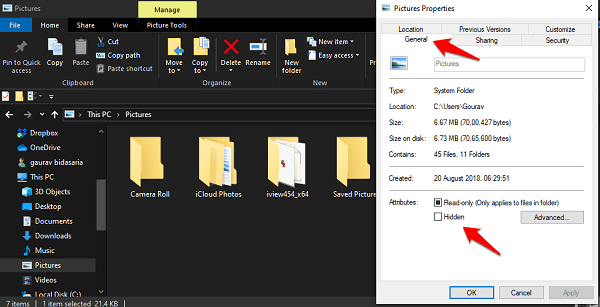

- #View hidden files windows 10 how to
- #View hidden files windows 10 update
- #View hidden files windows 10 manual
Under Advanced settings, select Show hidden files, folders, and drives, then click Apply. Select Folder Options, and then select the View tab. Click on Appearance and Personalization. Click the Start button, then select Control Panel. Under Advanced settings, select Show hidden files, folders, and drives, then click Apply. In the Advanced settings column, select Show hidden files, folders, and drives, then click Apply. Select Show hidden files and folders from the search results. Right-click on the Windows icon, select Search and type folder. Therefore, initially recover the hidden files and folders and try opening it. Note: If you have accidentally deleted or formatted the hidden files and folders and trying to view the files won’t be useful. You can follow the below mentioned steps to see hidden files and folders on different Windows Versions. There are times when you may need to show these hidden files and folders. #View hidden files windows 10 how to
How to View Hidden Files/Folders on Windows? If you are unable to view the Show hidden files option in Windows, that’s probably because some of your Windows system files are corrupted or damaged and need an immediate fix. Both Windows and macOS computers have hidden files. These files are essential files related to the operating system that helps running Windows applications. The reason behind some files and folders are marked as hidden is that they are not the files that you should be accessing or altering, deleting or moving around. Why Some Files and Folders are hidden in Windows?īy default Windows operating system is configured not to display hidden files.

Troubleshoot the problem Show hidden files and folder is not working without making it complex.
#View hidden files windows 10 manual
The article provides complete manual solutions for the trouble. At times Window’s Show hidden files and folders option don’t work or show up on the screen when requir ed to access it. 3 Different ways to enable an administrator account on Windows 10, 8.Most of the Windows users face the issue with hidden files and folders.
#View hidden files windows 10 update
How to Uninstall a Windows 10 Cumulative Update. And uncheck the same to show the file or folder on a Windows computer. Then next to Attributes checkmark On Hidden To hide the file or folder. Note: Once you’ve completed your troubleshooting or other tasks which required access to these hidden folders, you can restore the default setting and re-hide them by navigating back to File Explorer > View > Options > View and changing the setting identified earlier back to Don’t show hidden files, folders, or drives.Įxtra Tips: To Hide Any file or folder, simply right-click on it and select properties. If you need to access one of the “Local” folders in AppData, you can simply navigate up one level in the File Explorer address bar. This will launch a new File Explorer window and take you directly to the “Roaming” folder of your user account’s AppData folder, where the majority of your application-specific data is stored. Simply press Win + R, On-Run Type %appdata%, and hit enter key to open the Hidden AppData folder on Windows 10. you’re only interested in just your user account’s AppData folder, you can access it without having to go through the process to “Show Hidden Files.” On Windows 10 AppData folder is hidden by default, Sometimes we access this folder to perform Troubleshooting windows.






 0 kommentar(er)
0 kommentar(er)
